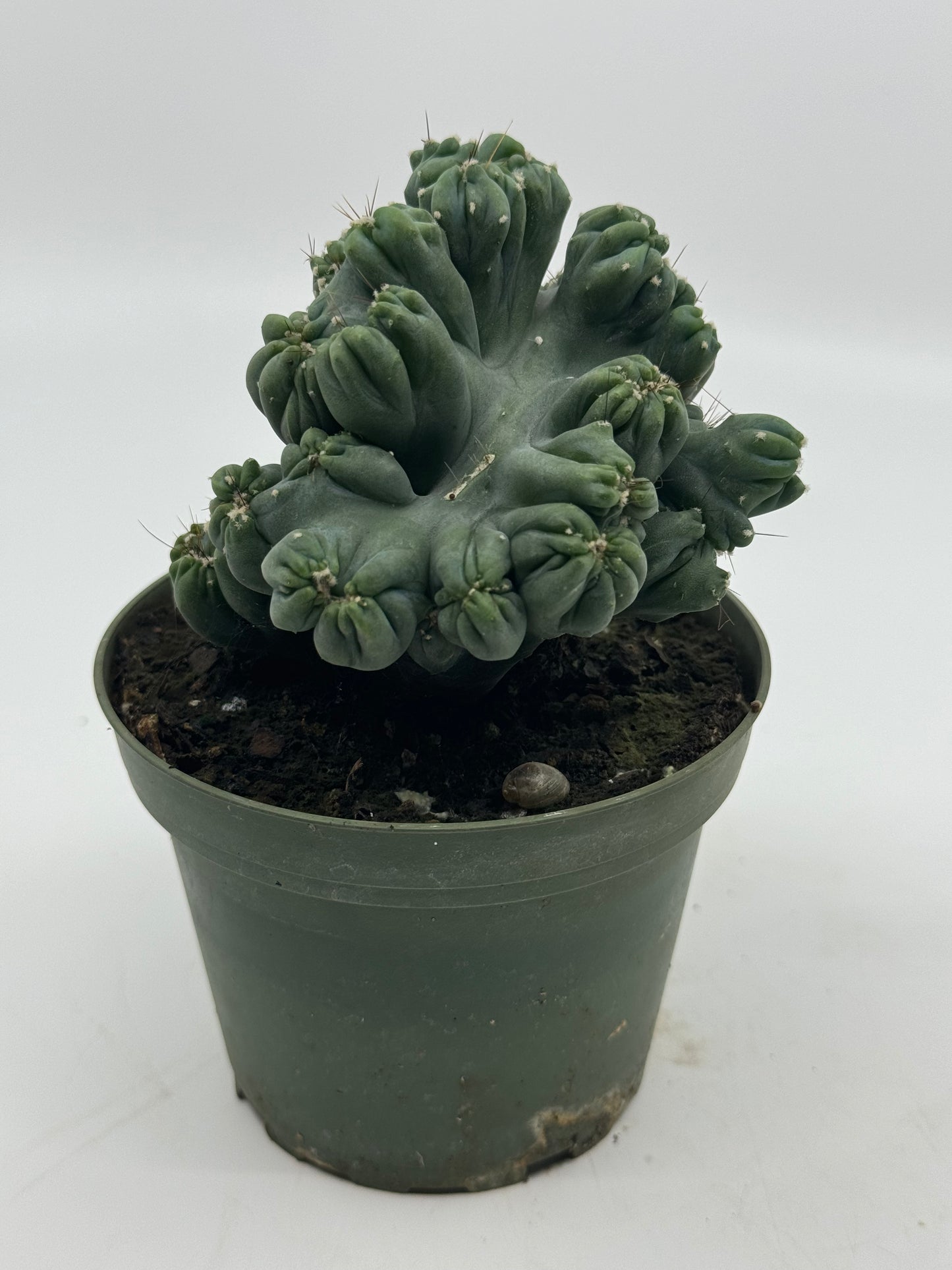Cereus forbesii "Ming Thing"
Cereus forbesii "Ming Thing"
3 in stock
Couldn't load pickup availability
Cereus forbesii "Ming Thing", commonly referred to as Ming Thing Cactus, is a fascinating and highly sought-after mutant cultivar of the Cereus forbesii species. This cactus is native to South America, particularly in Argentina and Bolivia, and is cherished for its unusual, sculptural growth habit that resembles a collection of knobby, blue-green clusters. It is a popular choice among collectors due to its unique appearance and relatively easy care requirements.
Morphological Characteristics:
-
Stem Structure: The most distinctive feature of Cereus forbesii "Ming Thing" is its unusual growth form. Unlike the typical tall, columnar shape of the standard Cereus forbesii, "Ming Thing" grows as a compact, clustered mass of knobby, lumpy stems. Each stem segment is typically short and thick, with a bluish-green to gray-green hue. The surface of the stems is often ribbed and covered with small, rounded tubercles (bumps) that give the cactus its characteristic knobby appearance. The spines are small, bristly, and emerge from the areoles (small, white, woolly areas) at the tips of the tubercles. These spines are usually light brown or yellowish and are relatively soft, making this cactus easier to handle than some other spiny species.
-
Growth Habit: Cereus forbesii "Ming Thing" grows in a low, spreading habit, forming clumps that can reach up to 15-30 cm in height and similar width. The growth is relatively slow, and the cactus can take several years to reach its full size. Its compact and unique form makes it an excellent choice for container gardening, particularly in small pots where its sculptural quality can be showcased.
-
Flowers: While "Ming Thing" is primarily grown for its unique stem structure, it can occasionally produce flowers. When it does, the flowers are large, typically white, and bloom at night, characteristic of the Cereus genus. However, flowering is rare in this cultivar, especially when grown indoors or in less-than-optimal conditions.
Ecological Preferences:
-
Light: Cereus forbesii "Ming Thing" thrives in bright, indirect light but can also tolerate some direct sunlight. However, too much direct sun, especially during the hottest part of the day, can cause the stems to scorch or become discolored. If grown indoors, placing it near a south or west-facing window is ideal, with some protection from the intense midday sun.
-
Soil: This cactus prefers a well-draining, sandy or gritty soil mix that mimics its natural arid habitat. A cactus or succulent potting mix, supplemented with extra perlite or coarse sand, is ideal to ensure proper drainage and prevent root rot. The soil should be allowed to dry out completely between waterings.
-
Water: Water Cereus forbesii "Ming Thing" sparingly, especially during the winter months when its growth slows. During the growing season (spring and summer), water thoroughly but infrequently, allowing the soil to dry out completely between waterings. Overwatering can lead to root rot, so it's important to err on the side of caution and water less frequently rather than too often.
-
Humidity: This cactus thrives in low humidity environments, similar to its native arid regions. High humidity can increase the risk of fungal infections or rot, so it’s important to maintain a dry environment around the plant. Good air circulation is also beneficial, particularly if grown indoors.
-
Temperature: Cereus forbesii "Ming Thing" prefers warm temperatures, ideally between 18-30°C (65-86°F). It can tolerate brief periods of cooler temperatures, down to around 5°C (41°F), but should be protected from frost and prolonged exposure to cold. During the winter, it’s best to keep the cactus in a cooler, dry location to mimic its natural dormant period.
Additional Care Tips:
-
Fertilization: Feed Cereus forbesii "Ming Thing" with a diluted, balanced, water-soluble fertilizer once a month during the growing season. A cactus-specific fertilizer is ideal. Avoid fertilizing during the winter months when the plant is dormant.
-
Pest Management: This cactus is relatively pest-resistant, but it can occasionally attract pests like mealybugs or spider mites, particularly if grown indoors. Regular inspection and prompt treatment with insecticidal soap or neem oil can help manage these pests. Proper watering and maintaining low humidity will also reduce the risk of infestations.
Share!

Terms of Sale
The cover photo of each product represents the current crop, you will receive a plant of a similar size and quality from the ones pictured.
Upon purchase of this plant, you are agreeing to the terms and conditions of this sale. For further details, please refer to our business Terms and Conditions.
For any further inquiries, please feel free to shoot us an email at team@foliatefl.com.

